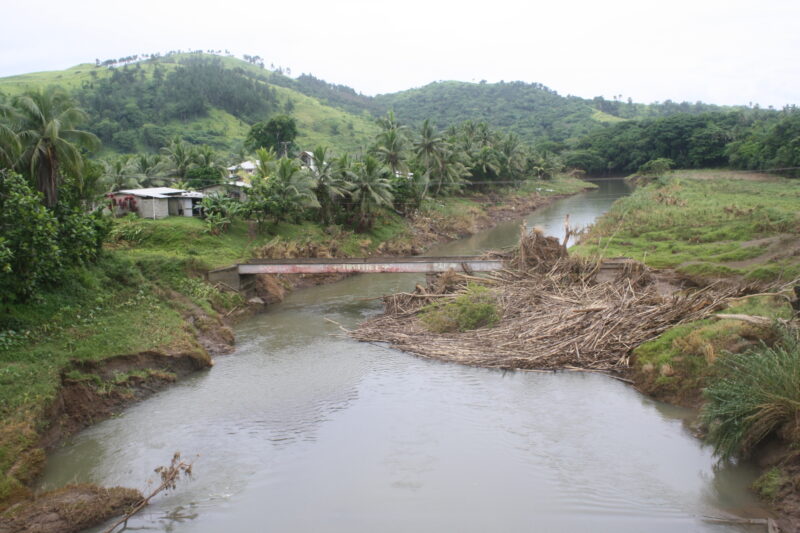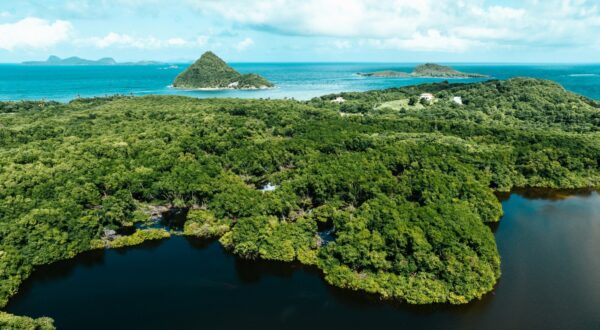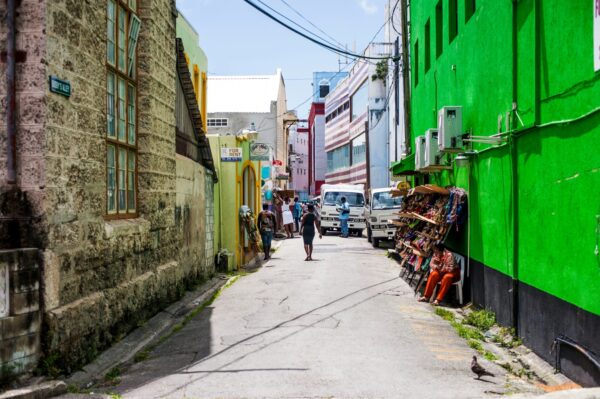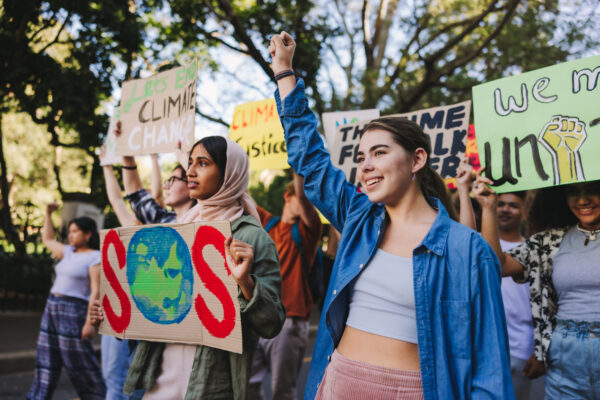Preparing for the Suva Expert Dialogue – getting Loss and Damage right
Olivia Serdeczny, Luis Zamarioli
Share

The World Economic Forum’s Global Risks Report 2018 ranks failure of climate change mitigation and adaptation among the top risks to global stability. “Big players” – the World Bank, the International Monetary Fund (IMF) – have recognised its relevance to their work and mandate. And, for developing countries, their message is dire: rising temperatures slow economic growth, devastating climate-related impacts leave large negative imprints on economic development.
Most financial instruments that have been proposed in the context of loss and damage do not solve the problems developing countries face. Financial instruments that transfer risks can provide some relief. But these too will reach their limits as the risks of loss and damage turn into certainties under mounting climate change.
A technical debate on the financial instruments for addressing loss and damage is slowly unfolding under the Warsaw International Mechanism (WIM) on Loss and Damage. As part of this process, the Suva Expert Dialogue, decided at COP23 in Bonn, will convene experts to discuss questions relevant to loss and damage in developing countries.
What can we expect in terms of proposed solutions to the problem of loss and damage? And, perhaps most importantly, what is needed for the outcomes of the Suva Expert Dialogue to deliver useful insights and advice on how developing countries can cope with loss and damage?
Status quo
The shift from the notion of loss and damage as “harm” (think of early calls for compensation) to the less contentious notion of “risk,” has landed the question of finance for loss and damage in the waters of financial instruments to prepare for or deal with risk. And this is where the problem is perhaps not very well framed, leading to odd solutions on the table.
In 2016 the WIM Executive Committee (WIM Excom) issued a call for information on “best practices, challenges and lessons learned from existing financial instruments at all levels that address the risk of loss and damage associated with the adverse effects of climate change”. The submissions received in response to this call were summarised in an information paper.
The instruments described in submissions can be organised according to instrument type and whether they entail an element of risk transfer (see table below).
There is another suite of proposed instruments that are tax-based. The Climate Action Network has proposed to implement tax-based instruments at the global level or by developed countries. Such tax-based instruments are not subject to the criticism of this blog and are thus excluded.
Financial instruments other than tax-based from submissions in response to WIM Excom call for submissions 2016
| Humanitarian/ bilateral aid | Savings | Debt-based | Insurance | |
|---|---|---|---|---|
| No risk transfer | Micro grants | Disaster relief fund | Contingent credit/loan | N/A |
| Contingency fund | Micro credit | |||
| Micro savings | Ex-post bonds | |||
| Climate bonds | ||||
| Risk transfer | Catastrophe bonds | Insurance, including risk pools |
Description of instruments
Micro grants: Small non-repayable grants disbursed to individuals for investments into resilience-increasing technologies (e.g. agricultural technologies). Recipients contribute in kind through labour input or materials.
Disaster relief fund, contingency fund: Public resources (of at-risk countries) are set aside in a disaster relief or contingency fund so that resources are available in the event of a disasters.
Micro savings: Through coordinated loan groups, poor people join efforts in saving money and lend to each other in the event of need.
Contingent credit/loan: Credits or loans issued to countries affected by disaster. The credit/loan is contingent on the recipient country having implemented resilience-increasing measures.
Micro credits: Small repayable credits are issued to individuals who do not usually have access to credits.
Bonds: Issuing a bonds is basically like taking a loan from an investor, and, as with any loan, agreeing to pay it back after a pre-defined period of time, with interest (so-called coupon payments) on top. Typically, bonds are issued by corporates or governments.
- Ex-post bonds can be issued after a disaster in order to finance recovery.
- Climate bonds are bonds in which the issuer guarantees that the resources will be used for climate-friendly investments.
The instruments described above do not entail any element of risk transfer. They provide means for governments to respond, within the limits of their national resources, to impacts once they have occurred. Risk transfer instruments are slightly different:
Catastrophe bonds: Under pre-defined circumstances, for example in the event of a natural catastrophe, the bonds or parts of it do not have to be repaid, i.e. the debt is cut or cancelled.
Insurance: The insurance holder pays a premium to an insurer and receives payouts in the event of loss.
Under risk transfer instruments, the investor or insurer take on the risk – if a pre-defined event occurs or losses are incurred, the burden falls on them. In the case of catastrophe bonds, the investor will not receive their investment back. In the case of insurance, the insurer has to issue pay outs. However, both insurer and investor take on these risks for a certain price: interest rates or premium payments.
Reality check
With these explanations and the categories in the table in front of us, let us now take a step back and consider the problem that these instruments are meant to solve. The problem is climate-related loss and damage in developing countries. What exactly does this mean?
By way of a reality check, it is helpful to have a closer look at some numbers and recent analyses. Take, for example, the effects of hurricane Ivan on the Caribbean island state of Grenada. Damages amounted to more than twice the country´s GDP, destroying 80% of the island´s buildings. Similarly, after hurricanes Irma and Maria raged over Caribbean islands last year, 90% of Dominica´s buildings lay in shambles. Put bluntly, hurricanes hurt small island economies badly. In its World Economic Outlook 2017, the IMF adds that the “effects of storms are very persistent: even after 20 years, the economy has not fully recovered from the shock”. Add to this the effects of consecutive storms and sea level rise and a bleak picture emerges.
But not only extreme events hurt economies. Slow onset changes such as temperature rise also leave negative lasting effects on low-income economies. Again, the IMF is a good source of bad news: analysing historical data, the authors find that rising temperatures negatively affect economic growth in many low-income countries. Just as with extreme events, the effects are long lasting. As the authors put it: “Does economic activity in countries with warmer climates recover quickly after a rise in temperature? The analysis suggests not.” The analysis is based on 1°C relatively linear warming. Things could get a lot worse in the future, given the present lack of climate action.
This is the problem. Loss and damage means that developing countries are and will continue to be overburdened by climate change. They are already disadvantaged to cope with a problem they have hardly contributed to. Economic growth and stability – both much needed to cope with climate-related disasters – will be hit hard.
The limits of available instruments
Given these bleak prospects, most of the instruments in the table are of little use in solving the problem of climate change. For one, instruments are out of reach for developing countries that suffer from loss and damage. With their economies already severely strained and negatively affected by climate change, there is little room to set aside savings. As agricultural yields dwindle under heat extremes and health systems face the additional challenge of climate change, how can these countries redirect resources into a savings account? Debt-based instruments require some sort of creditworthiness, and that is likely decreasing for countries severely affected by climate change. Why would anybody issue a loan to a country, whose economy is visibly struggling and the prospects of ever seeing your money again are rather slim? Similarly, who would buy bonds from a country whose economy is in shambles?
Most of these instruments do not transfer risks. This means that for individual countries the risks do not decrease. They are neither pooled nor shared, which would distribute the burden more evenly across regions or actors. Without risk transfer, the burden stays with those affected with loss and damage. Given their negligible contribution to climate change, that is unfair.
Risk transfer instruments can provide some relief. Risks are spread among a larger group of actors or taken on by investors. But there are limits. The higher the risks (and they will increase with climate change), the higher your premium payment or interest rate. This means that risk transfer instruments will at some point be unaffordable or hardly feasible. Why would an insurance insure against sea level rise when it knows the impacts will come? Risks will no longer be insurable. And who will want to buy a catastrophe bond when the chances of not having it paid back are foreseeably high and rising?
But even when instruments are still affordable, the question of fairness is also looming large: Why should those who do not contribute to the increase in risk have to pay for it?
What is needed
As the discussion on finance for loss and damage will continue to unfold, it is important to keep reality in mind. Our future under climate change is not the world as we know it. Developing countries are not and will not be in a position to deal with loss and damage alone. This does not mean that many of the instruments in the above table are not useful for furthering economic growth in developing countries in the near future. But they are not a solution to loss and damage.
Developing countries need solutions that are fit for purpose. Instruments need to effectively and affordably transfer risks. Climate change needs to be factored in as a key driver of risks that will inevitably continue to rise. Instruments that incorporate triggers of debt relief like catastrophe bonds or repayments conditional on economic growth in recipient countries ought to point the way forward. But, as described above, there will be limits to such market-based approaches of risk transfer. It is almost too obvious to point out that we need to talk about international tax-based systems that could leverage the funding that is needed to jump in where the market options dwindle. Taxing those who contribute the most would coincidentally and neatly also address the question of fairness.












